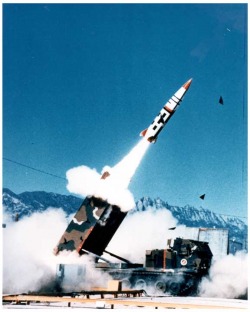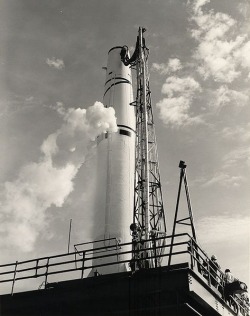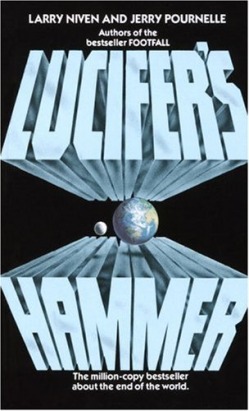General Information

A Diagram of the German V-2
- A ballistic missile is a missile that travels through a sub-orbital trajectory to deliver one or more warheads accurately to one or many targets. These missiles are powered during the lift stage of their flight and then use orbital mechanics and ballistics to hit their targets. Most ballistic missiles employ liquid rocket engines instead of solid rocket engines because of their reliability and for high altitude flight. The first ballistic missile was the German V-2 designed by Warner Van Braun. (http://en.wikipedia.org/wiki/Ballistic_missile)
The Different Types of Ballistic Missiles
- Tactical Ballistic Missile: Range between about 150 km and 300 km
- Battlefield Range Ballistic Missile (BRBM): Range less than 200 km
- Theater Ballistic Missile (TBM): Range between 300 km and 3500 km
- Short Range Ballistic Missile (SRBM): Range 1000 km or less
- Medium Range Ballistic Missile (MRBM): Range between 1000 km and 3500 km
- Intermediate Range Ballistic Missile (IRBM) or long-range ballistic missile (LRBM): Range between 3500 km and 5500 km
- Intercontinental Ballistic Missile (ICBM): Range greater than 5500 km
- Submarine - Launched Ballistic Missile (SLBM): Launched from ballistic missile submarines (SSBNs), all current designs have intercontinental range.
- (http://en.wikipedia.org/wiki/Ballistic_missile)
Tactical Ballistic Missile/ Battlefield Range Ballistic Missile

Tactical Ballistic Missile Launch from Truck
- The tactical Ballistic Missile is design for short range and battlefield use. This allows for the soldiers to not always storm a battlefield, but instead barrage the field with these tactical missiles. These missiles can be launched from fixed launch pads or mobile launch pad trucks. These missiles usually carry a small conventional warhead or tactical nuclear warhead. (http://en.wikipedia.org/wiki/Tactical_ballistic_missile)
Theater Ballistic Missile

PGM-17 Thor
- A theatre ballistic missile was used for targets within the theatre of war. They were much larger than tactical ballistic missiles at a length of 50 to 60 feet instead of 10 to 15 feet. These missiles have a range between 300 kilometres (190 mi) and 3,500 kilometres (2,200 mi) making its range between tactical and intercontinental ballistic missiles. Two examples of this type of in-theatre missile are the Soviet RT-15 and American PGM-17 Thor missile, both of the 1960s. (http://en.wikipedia.org/wiki/Theatre_ballistic_missile)•
Intermediate/ Long Range Ballistic Missile

- Intermediate/ Long Range Ballistic Missile are missiles with a range of 3,000-5,500 km (1,865-3,420 miles), between a medium range ballistic missile and an intercontinental ballistic missile. These missiles can be used to attack targets on different continents depending on the launch location. These missiles can also be launched from a mobile launch pad because of the still small size compared to the much larger intercontinental ballistic missiles. (http://en.wikipedia.org/wiki/Intermediate-range_ballistic_missile)
Intercontinental Ballistic Missile

Titan II
- Intercontinental Ballistic Missiles a long-range ballistic missile typically designed for nuclear weapons delivery with a range of 3500 miles or above. These missiles were able to carry great pay loads which allowed them to lift nuclear and heavy conventional weapons. With their great range and firepower, in nuclear war, submarine and land-based intercontinental ballistic missiles would carry most of the destructive force. These missiles were so powerful that they were used in the space program in the Gemini program. They were also used for lifting satellites into orbit. (http://en.wikipedia.org/wiki/Intercontinental_ballistic_missile)
Submarine-Launched Ballistic Missile

Trident II
- Submarine launched ballistic missiles are missiles capable of delivering a nuclear warhead launched from submarines. Modern missiles usually deliver multiple independently targetable reentry vehicles each of which carries a warhead and allows a single launched missile to strike several targets. The first successful test of this missile was by German submarines in World War II using a submarine towed launch platform. These and other early launch systems required to be surfaced when they fired missiles, but after World War II, launch systems were upgraded to launch underwater. The United States made the first underwater launch with a Polaris missile. (http://en.wikipedia.org/wiki/Submarine-launched_ballistic_missile)
Submarine-Launched Ballistic Missile
References in Apocalyptic Books and Movies

- In the book Lucifer’s Hammer, many countries launched their ballistic missiles because they believed that they were attacked by other countries.
- In the movie Dr. Strangelove, the Soviet doomsday device was many ballistic missiles that would launch if the Soviet Union was attacked.
